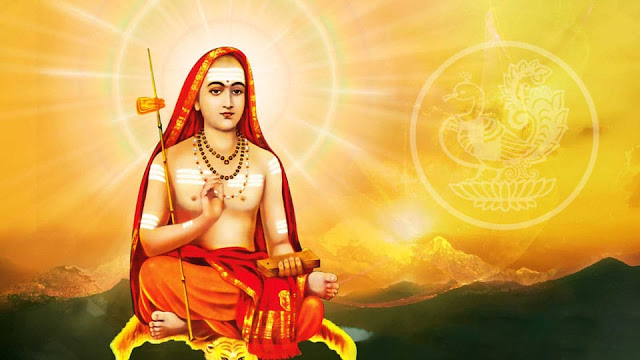Adi Shakaracharya Jayanthi
Adi Shakaracharya (788
- 820 AD), born in Kalady agrahara in Kerala. He was the foremost scholar who
explained the concepts of Aatma (soul), Paramathma (divine soul), Vairagya
(renunciation) and Moksha (salvation). He established 4 monastic centers in 4
corners of India and put his 4 main disciples to head them and serve the
spiritual needs of the ascetic community within the Vedantic tradition. He
classified the wandering mendicants into 10 main groups to consolidate their spiritual
strength. Each mutt was assigned one Veda. The mutts are
Jyothir Mutt at
Badrinath with Atharva Veda (Northern);
Sharada Mutt at Sringeri with Yajur Veda (South);
Govardhan Mutt at Jaganath Puri with Rig Veda (East),
Kalika Mutt at Dwarka with Sama Veda (West).
Adi Shankaracharya (or
the first Shankara) with his remarkable reinterpretations and revival of Hindu
scriptures, especially on Upanishads or Vedanta, had a profound influence on
the growth of Hinduism at a time when chaos, superstition and bigotry was
rampant. He arrived to the scene when there was complete destruction of truth,
culture and morality. At this time, Shankara advocated the greatness of the
Vedas and was the most famous Advaita philosopher who restored the Vedic Dharma
and Advaita Vedanta to its pristine purity and glory.
Adi Shankaracharya, who brought out Santana Dharma, from the clutches of rituals, is also considered as an incarnation of Lord Shiva by many people. Shankara Aradhane is celebrated with utmost fervour in Shankara Mathas all over India. Sringeri Sharada Peetham in Karnataka, Kalady Shakara temple Kerala, Kanchi Kamakoti Peetha Kanchipuram, and Shankar Matha Hyderabad are some places where the celebrations attract a large number of devotees

Comments
Post a Comment